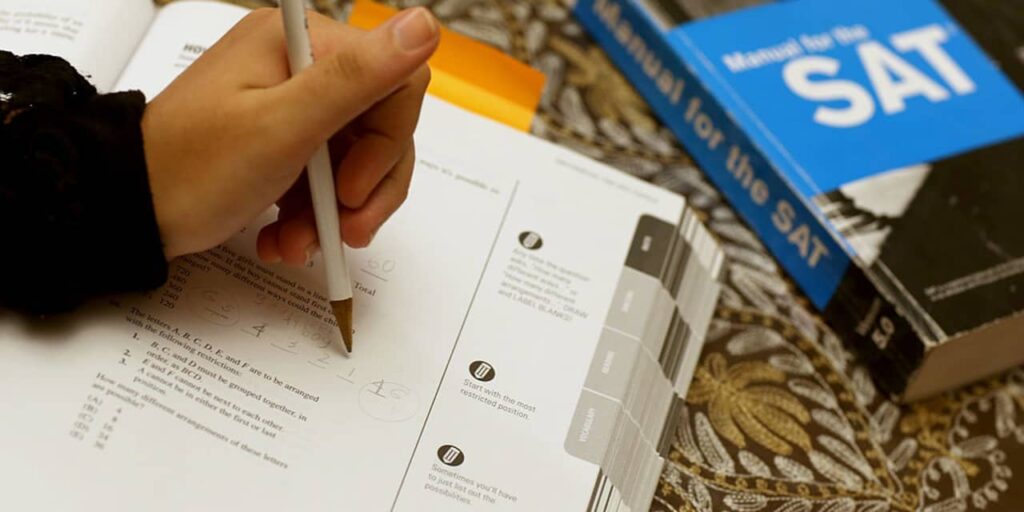Are standardized testing requirements a thing of the past or poised to make a comeback in college admissions? Dartmouth’s announcement this week that it would reinstate a testing requirement for applicants after a COVID-era pause reignited this debate.
There are some indications that other schools will follow. The Massachusetts Institute of Technology had previously announced it was reinstating its testing requirement and other colleges, like Brown, are investigating the benefits and drawbacks of the test-optional policy. A recent New York Times report argued in favor of requiring the tests, indicating that some college administrators were questioning test-optional policies.
All these developments could give schools the political cover they need to take a controversial step and bring back standardized testing.
But there are other signs that test-optional or test-blind policies could go from a pandemic blip to the norm. Roughly 2,000 colleges don’t require a standardized test, according to the National Center for Fair and Open Testing, which advocates in favor of test-blind and test-optional admissions policies.
Here are some reasons to think a significant number of these schools will continue not to require tests:
The end of affirmative action
The Supreme Court’s decision last year to ban the use of race-conscious policies in admissions makes requiring standardized tests less attractive to schools, according to Nicholas Lemann, a professor at Columbia Journalism School and the author of “The Big Test: The Secret History of American Meritocracy.”
That’s because standardized testing and the fight to get rid of affirmative action are closely linked, he said. The basis for white and Asian students challenging affirmative-action policies was the idea that colleges illegally discriminated against them on the basis of race.
“The proof is that X was rejected and Y with lower scores was accepted because of a racial preference,” Lemann said of these arguments.
Colleges dropped standardized-testing requirements in droves during COVID in part because of the challenges students faced sitting for the tests. But Lemann said the shift was also motivated by colleges that were anticipating the end of affirmative action. Organizations that aim to increase the share of low-income students, students of color and first-generation college students have said that rethinking standardized testing can be a way to maintain diverse classes without affirmative action as a tool.
“Where the universities sit is, they don’t want to have their Black student, Latino student percentage drop way, way down, but they also don’t want to be sued,” Lemann said. If schools don’t require students to submit standardized test scores it’s much harder for groups looking to sue over race-conscious admissions policies to use them as evidence of discrimination, he said.
Christina Paxton, the president of Brown University, noted the challenges of reinstating a testing requirement in a post-affirmative-action environment.
“We know from evidence that at many institutions in states where race can no longer be considered in admissions, racial and ethnic diversity among the student body decreased significantly,” Paxton wrote in a piece in Brown’s alumni magazine discussing some of her considerations as she weighs whether to reinstate a testing requirement.
“If the law is changed, we will need to make every effort to build a large, diverse and talented applicant pool,” Paxton wrote before the Supreme Court’s decision was announced. “Our biggest challenge will be ensuring that students we very much want push the ‘submit’ button on applications. Requiring test scores could work against us by reducing the size and diversity of the applicant pool.”
Many schools have said their policies are permanent or semi-permanent
Dartmouth’s decision may not instigate a sea change in part because some schools have already committed to test-optional or test-blind policies for the long term.
“These schools actually don’t work in lockstep,” said Anna Ivey, a college admissions consultant who was the dean of admissions at the University of Chicago’s law school before starting her firm. “We don’t want them all to move in lockstep.”
Last year, Columbia University said it would go permanently test-optional for applicants to Columbia College and Columbia Engineering, its two main undergraduate schools. In 2021, the University of California system said it would no longer consider SAT and ACT scores as part of the admissions process. Harvard University said it wouldn’t require an SAT or ACT score as part of its application at least through the application cycle for students in the class of 2030.
While the media is often focused on the palace intrigue surrounding college admissions at a handful of elite schools, the reality is that many schools don’t require standardized tests.
“I don’t believe there is a public university west of the Mississippi that requires the SAT or ACT, and I can’t think of any major private that does either, and so we’ll keep doing what we’re doing on the West Coast, and let colleges on the other side of the country attend to their business,” Jon Boeckenstedt, vice president of enrollment management at Oregon State University, wrote in an email.
The science isn’t settled
Part of the reason colleges may continue to take different approaches to standardized testing is because the research surrounding its role in the admissions process isn’t settled. Dartmouth officials have said that a large part of the reason why they reinstated the testing requirement is because SAT and ACT scores were a key tool they could use to find applicants who are typically underrepresented at Dartmouth, but who could succeed there.
The school based that reasoning on an analysis of their own applicant pool performed by three Dartmouth economists and one sociologist. Without standardized tests, admissions officers were forced to rely more heavily on other factors that increase the odds of admission for groups that “have historically been better represented at Dartmouth,” the professors wrote.
Other research indicates that things like letters of recommendation and extracurricular activities often disproportionately benefit wealthier applicants in the admissions process because they’re more likely to have access to club sports teams and guidance counselors who are practiced at writing these letters.
In addition, because Dartmouth considers standardized test scores in the context of a student’s life, students who would have actually benefited from admissions officers seeing their score didn’t submit them, the school said. The researchers posit this is because students worried their score would be too low.
“For example, an applicant with an SAT score of 1,400 has a higher probability of admission if from a high school where average SAT scores are relatively low. Under a test-optional policy, these students are less likely to be identified and admitted,” the professors write.
Some experts said they were skeptical that Dartmouth’s decision to reinstate testing was about increasing access to the school. “If that’s such a great solution then why didn’t they have diverse classes before COVID and before test-optional?” Ivey said. The share of students that Dartmouth graduates who received a Pell grant, the money the government provides low-income students to attend college, was 13% in 2017, when tests were required, compared to 16% at Princeton University and 22% at Amherst College.
Dartmouth did not immediately respond to a request for comment on its decision to reinstate the testing requirement.
But even outside of Dartmouth, the notion that standardized tests are a better predictor than some other measures of college success and that elite schools could use them as a tool to identify underrepresented students who would succeed at their colleges is gaining traction. A New York Times report by David Leonhardt published last month questioned the wisdom of test-optional policies based in part on data about their predictive value from a study of admissions data at a handful of elite colleges.
This research found that at these schools’ standardized test scores were more closely correlated with success in college than high school GPAs. The Times article noted that may be in part because of high school grade inflation.
“It is entirely plausible that at the Ivies, when everybody other than legacies and athletes walk in with a 4.2 [GPA], that an SAT score provides some marginal additional predictive validity for first-year grades,” said Harry Feder, the executive director of FairTest.
Still, other research indicates that low-income students who score relatively low on the SAT but perform well in high school can be successful at prestigious colleges. Even the College Board, which administers the SAT, has said that both the test and high school grades are related to academic performance in college. Using the two together “is the most powerful way to predict future academic performance,” the College Board said in 2019.
In addition, research indicates that being rich can be a big advantage when it comes to scoring well on standardized tests. Roughly one-third of the nation’s wealthiest families scored at least a 1,300 on the SATs, while less than 5% of students from middle-class families did.
Even researchers who argue the SAT can be a better predictor of success than college grades or other application criteria, like recommendations and extracurricular activities, note this is the case. Still, they say the scores can essentially be used to identify a diamond in the rough in situations where admissions officers have a harder time sussing out students’ qualifications based on their grades because they come from a school that doesn’t have a pattern of sending students to the college.
“The problem with that theory is there are just so few people like that,” Lemann said, because of the tight correlation between standardized test scores and race and income.
What’s more, as Paxton acknowledged, there is a risk that requiring standardized tests could scare off applicants who have the potential to be successful at these schools.
“If a kid in Laredo, Texas, at the local high school gets a 1,550, they can submit it to Dartmouth. They’re saying that kids got psyched out and didn’t submit,” Feder said. “That is an argument, but the response to that is those kids who they say should have submitted a score, if you require a test, most of them aren’t even going to apply.”
Dartmouth’s research indicated that there wasn’t a change in the income distribution of the applicant pool when the school went test-optional.
Regardless of whether Dartmouth’s decision influences other colleges, Ivey said it’s good that the past several years have created a “long-running experiment” on the value of standardized tests in the admissions process. Still, she said policies that explicitly require tests or don’t consider them at all provide more clarity to applicants than a test-optional policy “which just requires mind reading” from students and families.
“It’s really astonishing” that for so many years colleges ceded so much power to the organizations administering these tests, she said.
“If that’s being stress-tested and researched, that’s only a good thing from where I sit,” Ivey said.
Read the full article here












